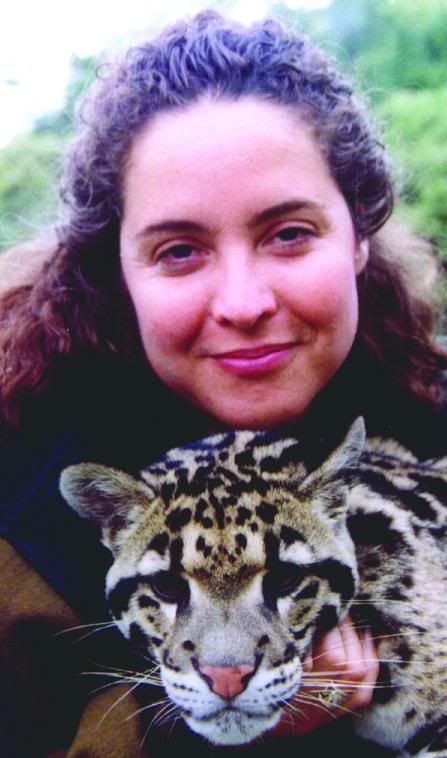
Ark Lady with Clouded Leopard in years past...
One of the interesting trends that I’ve noticed over the years is how some animal trainers have good sense while others who want to train are senseless.
What do I mean by that?
Consider this question, “I am looking for someone who has trained ‘insert species or breed here’ because I need to know how to train one.”
Puh-lease!
I think this type of thinking gets people into that “us and them” mentality because they think they can only talk to others who are working with the same species or breed.
Honestly, each field of animal training operates in its own world.
Marine mammal trainers, primatologists, dog trainers, horse trainers, etc., all tend to group together. This means that some fields of animal training are slow to adapt to strategies and tools that early adopters in other animal managment fields grasped years ahead of some of the others.
My belief is that any animal trainer worth their salt can train just about anything.
Don’t believe me?
People are training fish, reptiles, birds, mammals of all types and they don’t need to converse with others to do it.
Now, I do have to say that there are two sides to this training coin:
- Training theory and strategies remain the same for ALL animals, if you know how to train using these tools it doesn’t matter what species (or breed) you are working with.
- When training a particular species or breed of animal, it is helpful to understand the biology and species specific (or breed specific) traits.
In all my years training, I’ve found that knowing the natural history of an animal (how they live, if it is a predator or prey species, if its social structure includes others or if it is solitary, etc.,) helps me in my work–but I never have found I had to work with that particular species prior to training one.
Yes, I would prefer to observe or be around the species or breed but it isn’t vital to my work.
Okay, okay, I know you are going to argue that training and Afghan hound is different from training a Labrador retriever–but so is training a dog from working stock versus training a dog bred by a novice hobbyist.
And working with a Ragdoll differs from working with a tabby of unknown origin.
So, while it helps to understand and be familiar with the nuances of a breed or species, it isn’t always critical or even necessary. (The exception might be when you get into behavioral problems of a domesticated animal…but I digress.)
For instance, the first time I trained a giraffe I knew that there would be some logistical problems just based on the height and movements of the animals but I didn’t have to interview a lot of people to do it or to “get that” piece.
When you develop your animal sense, you look at an animal and its predispositions and work your training strategy from that perspective.
In some cases, such as a consult I did with a Clouded Leopard, I talked to the “queen” of the species because I wanted all the data I could collect.
I wanted to dig deeper into the species and very subtle nuances.
Now, in addition to training skill and research into the animal and its natural predispositions, I’ve also been using a strategy that I outlined in, What Animals Can Teach Us about Spirituality.
Don’t let the title mislead you, the book delves into animal influences and talks a lot about training (plus some more esoteric questions) but the social styles, or the trends that I identify as to how animals relate to the world is another critical piece I think most people miss.
Social styles are how an organism relates to the world. In the human realm most people know about the Myers-Briggs or Keirsey Temperament models.
Over the years, I’ve seen the same trends in animals (across different species) and first published my thoughts in the early 1990s.
I got a lot of grief for it but Pavlov noted some of those trends in the early 1900s.
So much for being a trendsetter!
Anyway, if you add that aspect to your training strategies and understanding of the species, it give you a triangle that forms a solid three-tiered approach to working with any animal.
So, I don’t believe all trainers are equal when it comes to how they work. Some treat all animals the same–I don’t believe that ultimately pays off and is senseless.
Good animal training sense starts with observation and is highlighted by a skill set that is developed and incorporates different considerations prior to and during actual training.
Okay, your turn to chime in. What do you think?


